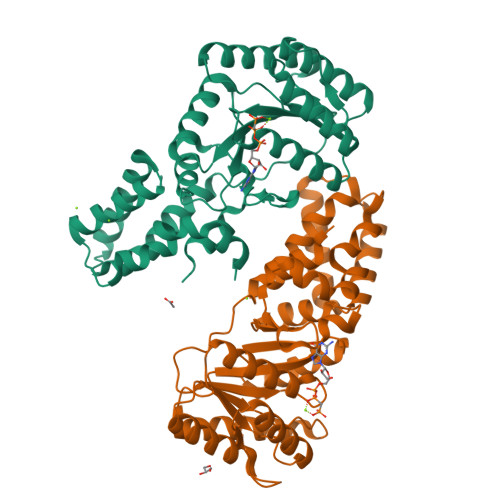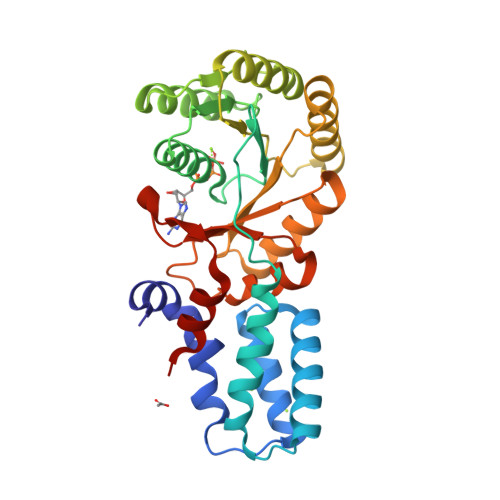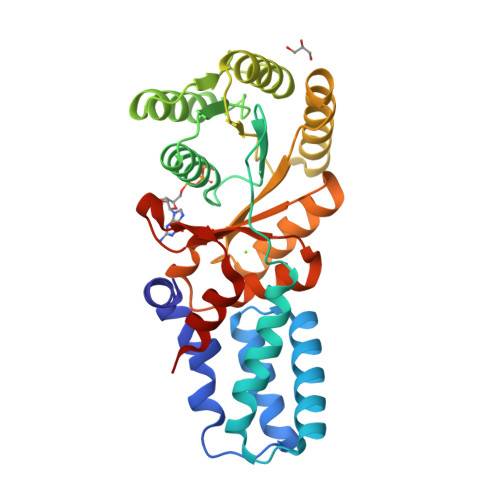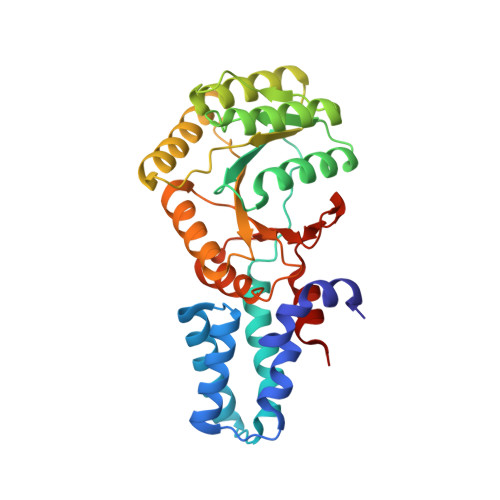Structural insights into the G-loop dynamics of E. coli FtsY NG domain.
Faoro, C., Ataide, S.F.(2019) J Struct Biol 208: 107387-107387
- PubMed: 31520694
- DOI: https://doi.org/10.1016/j.jsb.2019.09.004
- Primary Citation of Related Structures:
6N5I, 6N5J, 6N6N, 6N9B, 6NC1, 6NC4 - PubMed Abstract:
The bacterial signal recognition particle (SRP) receptor, FtsY, participates with the SRP in co-translation targeting of proteins. Multiple crystal structures of the NG domain of E. coli FtsY NG have been determined at high-resolution (1.22-1.88 Å), in the nucleotide-free (apo) form as well as bound to GDP and non-hydrolysable GTP analogues. The combination of high-resolution and multiple solved structures of FtsY NG in different states revealed a new sensor-relay system of this unique GTPase receptor. A nucleotide sensing function of the P-loop assists FtsY NG in nucleotide-binding and contributes to modulate nucleotide binding properties in SRP GTPases. A reorganization of the other G-loops and the insertion binding domain (IBD) is observed only upon transition from a diphosphate to a triphosphate nucleotide. The role of a magnesium ion during the GDP and GTP-bound states has also been observed. The binding of magnesium in the nucleotide site causes the reorientation of the β- and γ- phosphate groups toward the jaws of the P-loop and stabilizes the binding of the nucleotide, creating a network of hydrogen and water-bridge interactions.
Organizational Affiliation:
School of Life and Environmental Sciences, The University of Sydney, Sydney 2006, Australia.





















